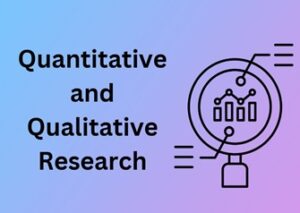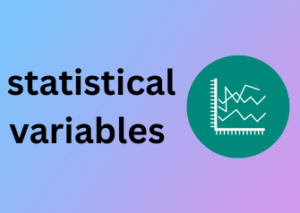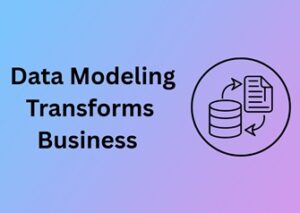Imagine this: a sleek commercial airplane hurtles down the runway, gracefully lifting into the sky. It will traverse thousands of miles, cruise at jaw-dropping altitudes, and finally touch down at its destination hours later. Have you ever wondered how all of this is monitored so seamlessly? That’s where Flight Data Monitoring Software (FDMS) steps in—a true guardian angel for modern aviation.
From the very moment the plane’s wheels leave the ground to the instant they kiss the runway again, flight data monitoring tracks every single moment in the air. It’s not just about ensuring safety (though that’s paramount); it’s about understanding what happens at every stage of a flight. Let’s take a closer look at why this technology is the watchdog aviation didn’t know it needed.

What is Being Tracked?
Flight data monitoring is no small feat. Planes today are equipped with sensors and systems that gather exhaustive amounts of data. So, what exactly is on the radar?
- Altitude & Airspeed: Real-time monitoring ensures that the aircraft maintains optimal parameters, avoiding turbulence or other hazards.
- Engine Performance: Powerful algorithms track engine health and detect inefficiencies before they become costly or, worse, dangerous.
- Flight Path: Data ensures that the aircraft stays on course and adjusts dynamically to external factors like weather.
- Landing Gear Dynamics: From deployment to touchdown, every step of landing is closely monitored to guarantee it goes off without a hitch.
Wondering how much data we’re talking about? It’s immense. A single flight can produce gigabytes of information that gets logged, analyzed, and sometimes stored for future evaluations. In short, your favorite 747 generates data the way your phone generates selfies—only much more thoughtfully.
Why Monitoring Every Moment Matters
But why is tracking every aspect of a flight so crucial? Here’s the deal:
- Proactive Maintenance: By keeping tabs on key systems, airlines can identify small anomalies before they snowball into bigger problems. This keeps planes flying, delays minimal, and safety at the forefront.
- Pilot Support: FDMS acts as a co-captain (minus the jokes). If a pilot is faced with unexpected challenges, live monitoring can provide insights or warnings to guide swift decisions.
- Minimized Human Error: The software feeds data to aviation teams, leaving no stone unturned. By automating tracking, human error can be minimized, making air travel even safer for passengers.
An Eye in the Sky
Let’s not forget: flight data monitoring isn’t limited to emergencies. It paints a bigger picture. For example, FDMS records which routes are most efficient, helping airlines to reduce fuel consumption. It tracks weather impacts, so pilots can adjust strategies for smoother flights. Even in-flight anomalies like unexpected vibration or noise levels don’t go unnoticed anymore. You, the passenger, may not think about it as you sip on orange juice and flip through the in-flight entertainment, but the skies are being watched—and that’s a very, very good thing.
Essential Insights: How Data Shapes Safer Skies
Flying is one of the safest modes of transportation today, and a major reason for that is the growing reliance on data-driven technologies. Flight Data Monitoring (FDM) software gathers insights from aircraft systems at every moment, giving us a clearer picture of aviation safety than ever before. But how does this data ensure safer skies for everyone? Let’s dive in and explore!
The Power of Preventative Measures
One of the greatest contributions of flight data is its ability to identify potential risks before they turn into real issues. FDM software constantly analyzes performance trends and anomalies—almost like a crystal ball for aviation. For example:
- Identifying trends: If engines or other components repeatedly show signs of stress or wear, maintenance crews can act quickly to prevent failures.
- Improving pilot training: Analyzing flight data on pilot maneuvers can pinpoint areas for improvement, enabling tailored training programs that enhance skill levels.
By transforming raw numbers into actionable insights, airlines and crews are equipped to stay ahead of potential hazards. Think of it as tackling problems while they’re still a whisper, not a shout.
Learning from What Went Wrong
The aviation industry takes accidents and incidents extremely seriously—and data plays a key role in post-event analysis. When something goes wrong, FDM provides insight by piecing together exactly what happened in the cockpit and aircraft systems. Did weather play a role? Was it a technical fault? Were human decisions involved?
By studying these unfortunate events, safety teams develop recommendations to ensure history doesn’t repeat itself. For example, the advent of Enhanced Ground Proximity Warning Systems (EGPWS), which alert pilots when their aircraft is dangerously close to terrain, came about because data analysis highlighted the need for such systems to reduce controlled flight into terrain (CFIT) incidents. The benefits of these insights are clear—it’s all about learning and evolving.
Building Safer Routes in Real Time
Flight data doesn’t just look back at past flights; it actively shapes ongoing operations. Flight paths can be dynamically adjusted based on real-time data around weather patterns, turbulence, and air traffic congestion. For example:
- If wind patterns indicate heavy turbulence ahead, pilots can use accurate data forecasts to adjust altitude for a smoother ride.
- Increased situational awareness allows air traffic controllers to adapt flight routes, reducing the likelihood of mid-air collisions.
These real-time interventions keep passengers safe and ensure smooth journeys from one destination to the next.
Collaboration: A Team Effort for Safety
One of the unsung heroes in aviation is the collaboration between flight crews, ground staff, and software developers. FDM isn’t just a tool for pilots; it’s a bridge connecting these teams to create a cohesive safety network. For airlines, this means adopting data-sharing frameworks so that insights benefit everyone involved.
Safety doesn’t happen in isolation. Every data point feeds back into an ecosystem designed to protect passengers, crew, and aircraft alike.
Beyond the Cockpit: Understanding Operational Efficiency
Let’s take a moment to peek behind the curtain of flight operations. When you think of flying, your mind probably drifts to pilots skillfully maneuvering aircraft, or perhaps those delicious in-flight snacks. But did you know that much of the magic happens “beyond the cockpit”? Operational efficiency is the not-so-secret ingredient that keeps flights organized, punctual, and cost-effective. It’s the backbone of modern aviation!
Why Operational Efficiency Matters
At its core, operational efficiency is all about making sure that airlines, fleets, and ground teams work together like a well-oiled machine. Every time a plane takes off, there’s a mountain of data influencing decisions—from fuel management to maintenance scheduling, even the optimal cruising altitude. When efficiency is prioritized, it benefits everyone: the passengers, the airline, and even the environment.
How Flight Data Monitoring Powers Efficiency
So, how does flight data monitoring (FDM) software fit into the picture? At its essence, FDM collects vast amounts of information before, during, and after a flight. This data reveals patterns that can be used to streamline operational processes such as:
- Fuel Efficiency: Monitoring fuel burn rates and optimizing routes reduces wasted fuel, saving airlines millions and helping reduce carbon emissions.
- Maintenance Ahead of Time: FDM tracks performance metrics, flagging small issues before they become big (and expensive) ones. Think of it as predictive healthcare—but for planes!
- Crew Rostering: Imagine an algorithm crunching numbers to ensure the right crew is in the right place, without excessive downtime. No missed connections, no rushed handovers.
When airlines dig into this treasure trove of data and act on the insights, they create smoother, safer journeys for everyone involved.
The Ground Crew’s Silent Victory
It’s not just the pilots feeling the impact of operational efficiency. Behind the scenes, ground teams rely on FDM tools to work smarter, not harder. For instance, data helps schedule ground services like refueling, passenger boarding, and electricity supply in just the right timeframes—not too early, not too late. This prevents delays and ensures that the aircraft is ready to roll without unnecessary downtime.
Closing the Communication Gap
One of the lesser-discussed perks of smart flight data monitoring is how it breaks down silos between departments. When pilots, maintenance teams, and operations managers have access to a central flow of accurate data, everyone stays in sync. Communication becomes seamless, and decisions can be made faster and more effectively. This collaborative ecosystem saves time and makes flights run more predictably, a benefit you’ve probably appreciated without even knowing it!
Turning Raw Data Into Reliable Decisions
Let’s talk about the magic behind flight data monitoring: turning numbers and raw data into actionable decisions that improve aviation safety, efficiency, and reliability. This process may sound super technical, but when broken down, it’s actually fascinating, and its impact is enormous. So, buckle up, and let’s unpack how the aviation industry extracts meaningful insights from seemingly endless streams of data.
The Sea of Raw Data
Every flight is essentially a treasure trove of data. Sensors and systems on planes track countless variables—altitude, airspeed, engine performance, fuel consumption, and even things like weather conditions and pilot actions. But raw data on its own isn’t very helpful, right? Without context or analysis, it’s just numbers flying by (pun intended).
This is where advanced flight data monitoring software steps in to help. These tools collect, sift through, and organize vast amounts of information gathered during every second of a flight. The goal? To recognize patterns, pinpoint anomalies, and pave the way for informed decision-making.
Transforming Data Into Insights
So, how does one turn raw data into something reliable and actionable? It starts with three key steps:
- Data Filtering: This involves identifying what’s truly important from the massive pool of recorded information. Software filters out redundant or irrelevant details, leaving us with a clean dataset focused on safety and performance metrics.
- Data Visualization: Once data is filtered, it’s presented using easy-to-understand visuals like graphs, charts, or dashboards. Think of this as a translator for pilots, engineers, and flight operators—a way of taking overwhelming numbers and creating an intuitive picture of what’s really happening.
- Pattern Recognition: Flight monitoring systems use algorithms (and often, machine learning) to compare collected data against baseline trends. Spotting irregularities becomes much easier when you know exactly what “normal” looks like.
Examples of Actionable Decisions
Alright, now let’s make this even more relatable. Here are just a few ways raw flight data transforms into game-changing decisions:
- Proactive Maintenance: By analyzing engine temperature data or vibration patterns, airlines can predict when maintenance is needed—before something goes wrong. This reduces the risk of mechanical failure and avoids costly, unexpected repairs.
- Fuel Optimization: Flight data can reveal inefficiencies in fuel usage and suggest adjustments to routes, altitude, or engine settings to maximize efficiency. The result? Lower carbon footprints and reduced costs.
- Improved Training Programs: Pilot performance metrics, such as reaction times and adherence to protocols, can inform training improvements to enhance skills and reduce risk.
Why This Matters
Reliable decision-making isn’t just about saving money (though that’s a happy byproduct). At its heart, it’s about safety and trust. When airlines and pilots base their actions on accurate insights, passengers can rest assured they’re flying in the safest conditions possible. Additionally, efficiency improvements mean fewer delays, smoother operations, and a more sustainable future for aviation.
The Role of Automation in Modern Flight Monitoring
Let’s face it—air travel is moving into the future faster than we can say “autopilot.” Automation is no longer just a convenience; it’s become an integral part of how flights are managed, especially when it comes to flight data monitoring. So, why does automation matter in this space? Let’s explore.
Why Automation? The Power of Consistency and Speed
Imagine the sheer volume of data generated on a single commercial flight: engine performance metrics, weather conditions, fuel usage, and even the angle of the wing flaps at every moment in time. Multiply that by the number of flights around the globe operating simultaneously, and you’ll have more zeros than most calculators can handle. That’s where automation steals the spotlight.
The beauty of automated systems in flight monitoring lies in their ability to process vast streams of data in real time with astounding accuracy. Unlike manual monitoring processes riddled with delays or potential human error, automated tools flag anomalies, inconsistencies, and potential threats instantaneously.
What Makes Automation So Effective?
- Real-Time Processing: Any pilot or operations team would tell you that information is most useful when it’s immediate. Automation ensures data is processed and made actionable as soon as it’s collected—critical for addressing mid-flight situations.
- Pattern Detection: Automated systems can identify subtle patterns or changes in flight performance that might escape human attention. Is the fuel consumption veering off baseline? Is one engine slightly underperforming? Automation has your back here.
- Round-the-Clock Monitoring: Humans get tired, but machines don’t. Flight data monitoring systems powered by automation work 24/7, leaving nothing unchecked. It’s the silent guardian your aircraft deserves.
Automation Doesn’t Function Alone. It Works With You!
While automation is incredible, it’s not about replacing skilled professionals. Instead, it’s a partnership. Think of these automated systems as trustworthy co-pilots ensuring that nothing falls through the cracks. From pilots to airline operations teams, people still make the critical decisions; they’re just armed with better, faster, and more thorough information.
For example, an automated system might detect unusual turbulence patterns during a transatlantic flight and instantly provide suggested altitude adjustments. However, it’s the human pilot who reviews this information and decides the safest course of action in the context of what’s happening on board.
Getting Smarter: Machine Learning and Adaptive Systems
A big part of why automation in flight monitoring is so exciting is the incorporation of machine learning and artificial intelligence (AI). These technologies allow systems to become smarter over time by analyzing historical data. In the future, automated systems could optimize routes for fuel efficiency based on past performance trends or predict mechanical issues well before they become problems. It’s automation, but with an extra brainy boost.
Privacy and Security Concerns in Flight Data Usage
When it comes to flight data monitoring, privacy and security are two key areas that can’t be overlooked. In an era defined by advanced technology, data collected during flights offers immense value for improving safety, efficiency, and operational decisions. But with this treasure trove of information comes a serious responsibility: protecting that data and ensuring it’s used ethically.
Why Privacy Matters in Flight Monitoring
Let’s break it down: flight data monitoring is primarily about collecting and analyzing data generated by aircraft systems, sensors, and even pilot inputs. This information allows airlines and aviation experts to identify issues, streamline operations, and most importantly, improve safety. Sounds great, right? It is, but it raises an important question: how do we ensure this data isn’t misused?
For instance, data privacy concerns often arise when pilot performance information is logged and analyzed. Pilots might worry that their actions in the cockpit could be unfairly scrutinized, potentially impacting their reputation or job. As a result, airlines and flight monitoring software providers must strike a delicate balance: leveraging the data to enhance aviation standards while respecting the individuals who generate it. Transparency is key here. Pilots, crew members, and other stakeholders should be informed about how their data is collected, stored, and used.
The Security Side of the Coin
Now let’s flip the coin and talk about security. With so much sensitive information being recorded — from aircraft maintenance logs to real-time flight paths — flight data becomes a potential target for cyber threats. Hackers could exploit this data for malicious purposes such as sabotaging systems, stealing intellectual property, or even compromising passenger safety.
To counter these risks, robust data encryption and secure communication protocols are vital. Encryption ensures that even if unauthorized entities access the data, it’s unreadable without the corresponding decryption key. Layers of security measures, like firewalls and real-time monitoring for anomalies, further reduce vulnerabilities. And let’s not forget the importance of secure storage systems — this ensures that flight data isn’t just floating around unprotected in cyberspace.
Best Practices for Navigating Privacy and Security
So, how do we create a flight data monitoring environment that values both privacy and security? Here are some best practices that airlines and organizations can adopt:
- Transparency and Communication: Develop clear data usage policies and ensure all parties, including pilots and crew, understand exactly how their data will be handled.
- Adopt Industry Standards: Follow aviation-specific security guidelines like those set by the International Civil Aviation Organization (ICAO) or the International Air Transport Association (IATA).
- Regular Audits: Conduct routine assessments of your flight data systems to identify and patch any cybersecurity vulnerabilities before they become a problem.
- Restrict Access: Implement role-based access controls so that only authorized personnel can view or analyze the data.
- Invest in Cybersecurity Training: Educate employees about potential cybersecurity threats, such as phishing or social engineering, to minimize human error risks.
What’s Next for Flight Monitoring Tools in a Growing Industry
As the aviation industry continues to expand at an unprecedented pace, flight monitoring tools are evolving to keep up with the demands of a modern, interconnected world. From cutting-edge technologies to forward-thinking trends, the future of flight monitoring promises to revolutionize the skies. Let’s take a closer look at what’s on the horizon for these indispensable tools.

The Rise of AI and Machine Learning
Artificial intelligence (AI) and machine learning are not just flashy buzzwords; they’re genuinely paving the way for smarter and more efficient flight monitoring systems. By processing vast quantities of data in real time, AI algorithms can identify patterns and detect anomalies faster than ever before. This capability enables operators to address potential issues before they escalate into serious problems. Think of AI like the ultimate co-pilot, constantly learning and adapting to ensure safer, smoother skies.
In the future, we might see fully AI-driven monitoring platforms that can autonomously handle everything from engine diagnostics to passenger flow predictions. This would not only free up human operators to focus on other critical tasks but would also ensure near-instant response times for any abnormal situations.
Integration with Sustainability Goals
Aviation is going green—and flight data monitoring tools are playing a crucial role in creating a more sustainable industry. These tools are increasingly being designed to help airlines track their carbon emissions, optimize fuel consumption, and streamline flight paths for greater efficiency. As environmental regulations tighten and travelers demand greener practices, advanced monitoring systems will make it easier for the industry to meet these sustainability goals.
For instance, future systems could provide real-time recommendations to pilots, such as altitude adjustments that minimize fuel burn while maintaining optimal operating conditions. Additionally, the use of predictive analytics could help airlines anticipate maintenance needs, preventing fuel-inefficient delays and ensuring fleets are always in top shape.
Advanced Data Visualization
Let’s be honest—raw data can be overwhelming. That’s why the future of flight monitoring is shifting towards more intuitive and engaging ways to present data. Visual dashboards, interactive 3D airspace maps, and customizable interfaces will make it easier for operators, pilots, and airport staff to access the information they need at a glance.
Imagine a future where a pilot can view real-time wind patterns, weather forecasts, and air traffic conditions, all displayed in augmented reality (AR) on their heads-up display (HUD). These advancements would not only improve decision-making but also enhance situational awareness in the cockpit and beyond.
Global Standardization and Collaboration
As flight monitoring tools continue to advance, fostering global cooperation will be key. Currently, the aviation industry relies on a patchwork of monitoring systems and protocols, but the growing push for standardization could create a more unified approach. International collaboration would enable seamless data sharing across borders, improving overall safety and operational efficiency worldwide.
In the coming years, initiatives like shared cloud platforms and blockchain technology could make this a reality. By securely and transparently logging flight data on accessible networks, airlines, regulators, and manufacturers can work together to create a safer, more consistent flying experience for all.
What This Means for the Industry
The future of flight monitoring tools is incredibly exciting, blending technology, innovation, and sustainability to push aviation into uncharted territory. While these trends show great promise, the key lies in their implementation. By focusing on scalability, usability, and ethical considerations, the industry can ensure these advancements benefit everyone—from the tiniest regional carrier to the largest international hub.











